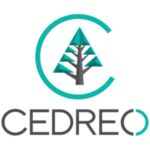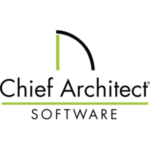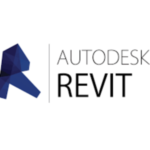Even the most skilled and knowledgeable landscape design artists won’t be able to do anything or present their ideas and concepts without using the right tools at their disposal. With the help of landscape design renderings, 3D landscape designers can show prospective clients what they can expect regarding the project’s final appearance. These renderings can go a long way in assisting landscape professionals and architectural companies in winning more bids, closing more deals, and promoting and growing their ventures further.
Landscape design renderings have been made by hand or using complex and somewhat pricey CAD software for the longest time. Today, landscape rendering designers can access and choose from an extensive array of easy and simple-to-use tools to help them save both more money and time. This article gives you an overview of some of the best landscape design rendering software available for architectural companies. But first, let’s give a refresher on what landscape design rendering is all about.
 Table of contents
Table of contents
What is landscape design rendering?
Landscape design rendering uses specialized software programs to generate 3D or 2D images of landscape design concepts. Landscape design renderings can give existing and potential clients a clearer idea of the project’s appearance once it is completed. These renderings also ensure that the clients will all have the necessary visual details to request changes or make decisions accordingly.
It is worth mentioning that landscape design renderings have been gaining some controversies, unlike architectural or interior design renderings. Some professionals seem to feel that due to using unique plants in landscaping, the final product may be far from how the rendering looked. The good news is that most clients often know and understand that plant growth is not within your control. It means that as long as you’re transparent and honest about this right from the get-go, you can take full advantage of landscape design rendering software programs.
Although many landscape design companies still stick with old-school methods such as manual rendering techniques and hand drawings, using suitable software will help streamline the entire process and breathe life into your projects in just a few minutes. Now that you know what landscape design rendering is all about, here are some of the best landscape design rendering software options that architectural companies can choose from:

Cedreo
Cedreo provides a cloud-based 3D landscape and home design rendering software that allows users to come up with photorealistic designs in just a matter of minutes, even without prior experience in design. With the help of Cedreo, landscape architects will be able to prepare 3D presentations that can easily communicate their concepts and ideas to prospects and clients.
Cedreo also lets users define boundaries, create precise 2D layouts, and draw specific areas such as driveways, decks, and pools. You can toggle between 3D and 2D views to see real-time design updates and customize the lighting displays. Cedreo also lets you choose from various potted plants, shrubs, trees, and other outdoor elements that can bring the outdoor living spaces to life.

Chief Architect Home Designer
Chief Architect Home Designer is software designed for home builders and architects specializing in light commercial and residential projects. This platform comes with some impressive features. For example, if you need to prepare a floor plan, Chief Architect will automatically develop a 3D model and assemble a list of materials. It is also possible to use the software to create 3D presentations from all possible camera angles, apply different stylistic effects to renderings, or captivate clients with stunning virtual walkthroughs.
However, one important thing to remember is that although Chief Architect lets users make detailed exterior renderings, it is not explicitly meant for landscape designs. If you prefer software exclusively made for landscaping, you might not find Chief Architect as your best option. You might get unnecessary features and need to find workarounds to develop your landscape design.

Lumion
The architectural design software Lumion can produce some striking animations and renderings. There are incredible graphics, with the platform also offering features such as daylight simulation technology, rain-streaking effects, and displacement matching that can evoke emotions and kick them a few notches higher. Lumion also lets you import data from Open Street Map to add real-world terrains in just a few clicks.
Some users, however, claimed they had some issues with orienting the camera and customizing materials, although most people shared their generally positive experiences using the software. It is also worth mentioning that while Lumion offers several features for landscape design, this platform is geared more specifically toward architects. This makes Lumion an ideal choice for architectural companies that provide landscape design services.

PRO Landscape Design Software
PRO Landscape Design is a decoration and site plan software. While the application was initially meant for expert landscape designers, it has become available and accessible to everyone. The software is an ideal tool not just for designing but even for editing ready-made site images. The software also lets you create precise scale drawings of any scale and size of landscape plans.
Its catalog features over 18,000 objects for landscape design, such as ponds, garden buildings, plants for various climatic zones, and sculptures. Projects are also developed based on a photo taken on a tablet or smartphone. Additional objects can be removed easily from the photo and replaced with the ones in the catalog that you liked more. The software also transforms daytime photos into stunning twilight or night images.

Revit
Autodesk is behind the development of the architectural design platform Revit. While it is not necessarily meant for landscape designers, as it is developed to cater to engineering, construction, and architecture professionals, the software still includes several useful landscaping features. The software also lets users create 2D documentation and designs, generate photorealistic renderings, and even run visual reports to assist project managers in estimating the costs and optimizing the building performance at the different stages of the construction process.
Although Revit includes features for exterior rendering, this isn’t necessarily made for landscape designers. The core use case of Revit is to serve as a BIM platform for multiple disciplines. The main idea is to give engineers, contractors, and designers a shared platform for seamless collaboration. However, knowing that the platform might be difficult to learn is essential. Although Revit is meant to be more intuitive compared to its predecessors, it is still sophisticated enough. It only goes to say that it will likely overwhelm novice designers.

SketchUp
SketchUp is one of the highest-rated 3D design platforms that lets 3D designers show off and present their ideas and concepts using photorealistic renderings, interactive walkthroughs, and flyovers. Even if the app includes several outdoor elements, it is easy to see that SketchUp is geared toward home builders and architects than those who specialize in landscape design.
The Extension Warehouse and APIs of SketchUp also allow users to incorporate the software with their existing tech stack and personalize the project workflow and style so you can make it your own. The platform also has steep learning curves for those designers who might be inexperienced with CAD tools.

SmartDraw
The landscape design software of SmartDraw lets users quickly come up with thorough landscape designs using its intuitive drag-and-drop editor. This platform offers dozens of customizable quick-start templates, although you still have the option of designing 2D plans on your own from scratch. Users can save plans to the shared SmartDraw folder or even via Microsoft OneDrive, Google Drive, or Dropbox to easily collaborate with colleagues and clients.
It’s also important to note that even if SmartDraw comes with several features that landscape designers and architects may find helpful, it’s not the most ideal for those users who need a platform that also features presentation tools. As a diagramming app, SmartDraw only lets the users create 2D designs. It comes with a development platform that enables you to develop custom extensions. If you already have in-house capabilities, the software can also be integrated with another platform that provides virtual tools, 3D renderings, etc.

VizTerra
The landscape design software VizTerra takes pride in its impressive selection of features that all focus on outdoor design projects. The platform aims to allow landscape designers and architects to streamline their workflows. VizTerra also provides GIS-surveyed high-resolution terrain data that lets users get accurate views of the client’s property from different angles. Users can also outline boundaries, size up outdoor living spaces no matter where they are, and calculate square footage.
Cadcrowd’s landscape design services are at your disposal
These are some of the best landscape design rendering software for architectural companies. But if you are not confident using these programs, you can always entrust the job to Cad Crowd’s expert 3D landscape rendering services.
